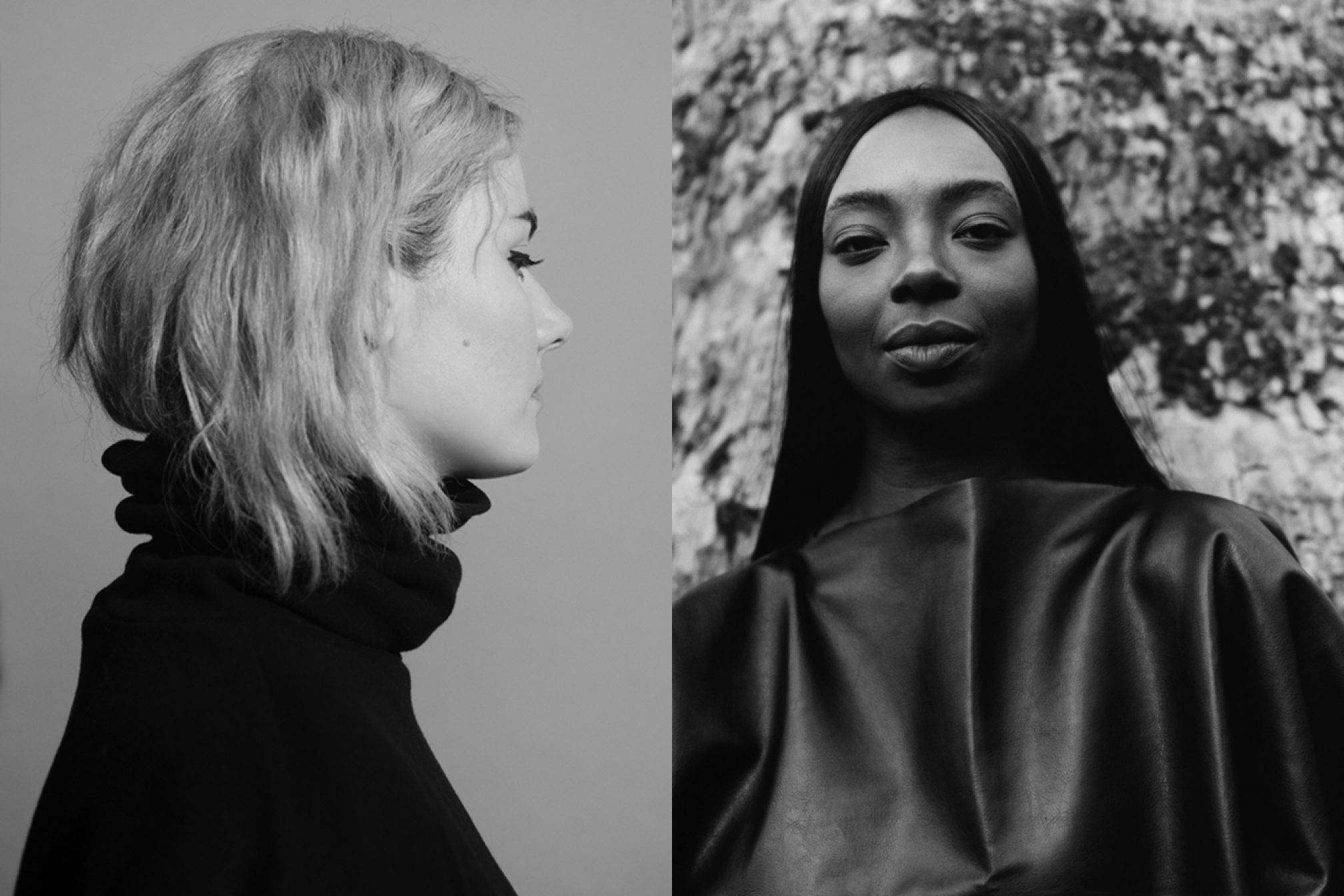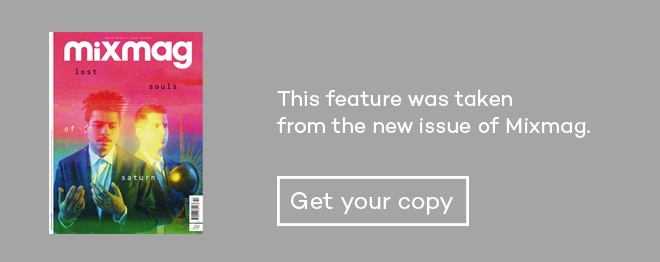 Artists
Artists
Eclair Fifi and Afrodeutsche talk Aphex Twin, family raving and techno musical chairs
Eclair Fifi and her debut label signee Afrodeutsche in conversation for our B2B interview series
Afrodeutsche and Eclair Fifi grew up at opposite ends of the UK, one in rural Devon and the other in rave-tinted Edinburgh. Nearly 10 years since they met at Manchester party Hoya:Hoya, Afrodeutsche, real name Henrietta Smith-Rolla, is undoubtedly one of the most exciting and original producers out of the UK in years, while Clair Stirling has built a reputation as one of the finest selectors around through her NTS show and energetic, eclectic club shows around the world. As Afrodeutsche contributes the gleefully wonky first release on Fifi’s new label, River Rapid. We got the pair together to talk Aphex, family raving and techno musical chairs.
Henrietta: Clair, I know your parents were ravers. Did you grow up listening to techno and house thinking of it as ‘mum and dad music’, or were you just well into it?
Clair Stirling: It was mum and dad music, but it was also cool. I always looked up to my parents, so I was intrigued by it. And they listened to proper Mum and Dad music too: Neil Young, Talking Heads, Dire Straits… on a family holiday up to the Highlands, the music in the car would suddenly switch from Green Velvet to Talking Heads. So to me, it all blended into one and it didn’t really matter.
H: I was talking to my mum the other day about all the other stuff we used to listen to. She’d put Top Of The Pops on, but she’d feed it in through the stereo in the other room. And of course, she’d have to wait for the number one to hit. I remember just bouncing around to Soul II Soul with my mum, and whenever I listen to them now I’m straight back into my front room.
C: And when did you first discover proper rave culture?
H: I was just a little too young to go to free parties, but events were happening near where I lived in Devon and Cornwall. They took place deep in the woods. My best friend was a couple of years older, and I was inheriting flyers and mixtapes that would tell you when the next one was going to be. So it was this mysterious world that I was sitting next to.
C: I had a similar introduction to rave. A bunch of us would meet in the IKEA car park, and you’d have to follow a car that would come and pick up ten cars a time and take you exactly where it was. This was around 1999 or 2000. But sometimes, these raves were run by my uncle, so I wouldn’t tell my dad that I went. When it’s that mysterious and exciting and cool, you get into the mystique and get into it a lot more strongly. Not that young people now aren’t as passionate, but back then, it was so exciting.
H: Right, because how else would you share the music unless you had a record shop, or knew someone who got records in? I realised recently that I can remember loads of tracks but sometimes never their names, as there wasn’t a tracklist available. I was probably listening to loads of Aphex Twin, but didn’t know because he was playing under some alias.
C: Who was introducing you to music at the time? Who were you trusted sources?
H: The record shop near me was called Onion Heart. It was owned by a guy called Mike, and not only did he get really good music, but he’d book really good artists for parties. You just hoped somebody would get all the way to Devon and you could ask them to identify the beat you’d heard. Trying to track down and buy the music you were listening to was another fun part.
C: It’s true. I still love a lot of those old mixtapes that I have, and I want to get a permanent tape deck to digitise them. And there are still tunes I can’t ID! Thirty years later and Shazam’s not doing anything for me. I think I stumbled across your music when I’d just decided to start a label, but I hadn’t thought of the release or the remixers. But I definitely wanted to begin by speaking to friends. That was my priority, really, to elevate people. And your music just sounded so instantly fresh. It sounds new, but also a throwback. I knew you played piano and drums, but I’d never heard your music, and on the first listen I was so impressed and excited.
H: I already had a lot of respect for what you’d been doing, not to mention the amount of times I’d seen you and just totally lost my shit. I remember seeing you support Autechre in Glasgow and it being completely wild. After you were finished playing, you came down for a dance afterwards and your face was pure joy. So it was a no-brainer for me. I was just so chuffed you asked!
C: I was really jetlagged for that gig, as I’d got back from Australia just the day before. I remember enjoying it, but I had to look at my folders from that night to even have an idea of what I’d played. And now you’re supporting Aphex Twin! [At Printworks, London on September 14].
H: When I found out, I just cried. And then I couldn’t stop. I didn’t have any words! He’s been a huge influence on me from when I first heard ‘Vordhosbn’, from 'Drukqs'. It’s fucking beautiful, and there’s something different every time you listen. How did you get into Aphex?
C: It was through ‘Selected Ambient Works’, when I was a kid. My dad is an architect and used to put it on to work to, in the evenings, usually alongside Boards Of Canada. So it reminds me of childhood. I know there are some mental tracks on it, but it’s generally quite serene. And I remember seeing the video for ‘On’ on TV, and then later, as a young adult, my brother and I were obsessed with things like ‘Donkey Rhubarb’ and ‘Elephant Song’ – all the tracks he did that were more inspired by gabber and hardcore. It’s funny, though: I often can’t remember the names of Aphex tracks, I just know them by the look of the vinyl!
H: I never studied it or went to university, but I’ve always been interested in graphics and the aesthetics of things. But I can never remember the names of anybody! As far as rave culture goes, I used to have a collection of A6 flyers for parties like Fantazia, and for the livestream I just did at Dekmantel we printed a load of 90s rave posters but just put my face on them, and the rules for a game of musical statues on the back. Given your background in illustration are you going to get involved in the artwork for [your new label] River Rapid?
Watch: Éclair Fifi in The Lab LDN
C: Yeah, I will probably make some artwork for the label further down the line. So I have been asking myself: what are some of my favourite things about label artwork? And it comes down to really simple stuff: immensely recognisable logos that you can see from a mile away when they’re on a turntable or the shelves in a record store. Viewlexx, or Sleeping Bag Records, or the Drexciya logo. Because of my background, I think people were expecting something different from River Rapid, like intricate drawings, but really I just wanted something very simple.
H: And it’s fucking sick! It’s like hieroglyphics, it already feels historical. You know what it means, even if you don’t speak the language.
‘RR001’ by Afrodeutsche is out now on River Rapid
Read this next: Get the best of Mixmag direct to your Facebook DMs



